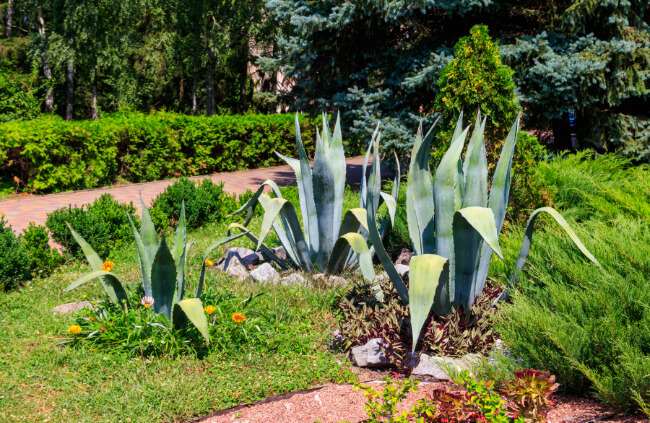You may have noticed a common theme running through the uses of these different types of cactus. They all seem to have some property that is prized for exploiting either for health benefits, medicinal drugs or even protection.
Where cactus plants lack in the instant gardening appeal department they make up for when it comes to their usefulness. Blue agave, Agave tequilana ‘Weber Azul’, are no different.
More...
Introducing Blue Agave
If you’ve ever had a drink of tequila (or should I say if you’ve ever been to university or college) then you would have tried the nectar of this cactus. The heart of this plant (the pina – now you know where pina colada comes from) is harvested when it's about 12 years old and the sap is drained, fermented and distilled.
Agave, like the Hoodia, are not true cacti. They are succulents that share similar properties. They are grown natively in the Jalisco state of Mexico which is about 2300m (7500 feet) above sea-level.

Ideal Conditions for Planting Blue Agave
They are best grown at altitude in arid zones but can be grown in home gardens quite successfully. They require full-sun and enough space to branch out.
Soil Type
Blue agave prefers a fast-draining sandy soil. It dislikes acidic or clay soils and if you plan to mulch around them use a dry mulch such as pebbles or pea gravel.
Watering Needs
Minimal. They only require 20 – 50ml rainfall per year, so extra watering is not needed. In fact, if these succulents were to receive more than this they would suffer with possible rotting roots, a common problem with this type of succulents.
Growing Blue Agave in Pots
Make sure the potting medium is fast-draining and that the pot is located in an area that receives a lot of sun. As they are larger plants you may need to repot them every 2-3 years to keep them from bursting out of their current pot or becoming root bound.
How to Propagate Blue Agave
Blue agave’s can be propagated from seed but this is not the easiest way to do it and is not highly successful. The best way to propagate agave is to take shoots from an adult plant and dry out for nearly 12 months. Then they can be transplanted into some potting mix and grown on from there.
Published on June 6, 2023 by Nathan Schwartz
Last Updated on February 8, 2024




